The first edition of VN’s first novel in English, The Real Life of Sebastian Knight, is a bibliographic hybrid in ways I wasn’t fully aware of in the 1980s when I was pulling my bibliography together. Published by New Directions in 1941, TRLoSK, I have determined, was issued in anywhere from five to eight possible combinations of bindings, labels, and dust jackets. (I say “five to eight” because there may be as many as three black swans in the forms of different binding/label/dust jacket combinations but which I haven’t yet found to exist.)
Publication Date
Before getting to those combinations, let’s look for a moment at the publication date. A number of copies (I see three for sale right now on the internet; I have examined many others), all in the red, rough burlap cloth, have
PUBLICATION DATE
________________
stamped on the front free endpaper and always the one date of “DEC 12 1941” separately stamped on the underlining. (I can get very picky here. I’ve seen the date in two different stampings, one with the “12” in the same font as the “1941” and one with the “12” in a different font. All of the “DEC”’s and “1941”’s are the same. This implies that at least in some cases a single date consists of at least two separate physical stamping actions. But since it is not unusual for a review or pre-publication copy of a book to have been distributed in slightly or even subtly different forms, I’m going to ignore these differences here.)
The U.S. Copyright Office lists a publication date of 6 December 1941. Brian Boyd (Vladimir Nabokov: The American Years, p. 40) gives an 18 December date. (Boyd tells me that this is “less than robust”; it is the date of the novel’s first review, “by Nabokov’s friend Amy Kelly in the Wellesley College News”.) And one copy with the stamped publication date has, in addition, a handwritten “12/5/41”.
Of course, what really counts as a publication date is when the book is offered for sale before the public (as Carter points out in his clear-headed ABC for Book Collectors). I don’t yet know exactly when TRLoSK was placed on sale, probably sometime in the first half of December. Until I turn up clear evidence (ads, publisher’s records), I am going to stand consistent and stick with the date I used in my bibliography: 6 December 1941.
Bindings, Labels, and Dust Jackets
Back to bindings, labels, and dust jackets. They come in a triplet of pairs.
 The Real Life of Sebastian Knight, rough cloth with short-line label |
 The Real Life of Sebastian Knight, smooth cloth with long-line label |
| BINDINGS: Rough cloth or smooth cloth. Well-known and very clear differences, here shown with labels and their measurements. |
 The Real Life of Sebastian Knight, detail of short-line (2.7 cm) label |
 The Real Life of Sebastian Knight, detail of long-line (3.0 cm) label |
| LABELS: Short line or long line. The two different front-cover labels are physically the same size, 6.1 X 5.8 cm. The leafy borders are also the same size, 5.0 X 4.5 cm. But the text lines are different lengths. One is about 2.7 cm. long, the other about 3.0 cm. In fact, a close examination shows that the fonts used on the two labels are slightly different. In particular, look at each “a”, “e”, “i”, “g”, “R”, and “s”. |
 The Real Life of Sebastian Knight, dust jacket, front, “Nabokov” variant |
 The Real Life of Sebastian Knight, dust jacket, front, “Nabokoff” variant |
| DUST JACKETS: “Nabokov” spelling or “Nabokoff” spelling. One variant dust jacket has the author’s name spelled “Nabokov” throughout, his first name spelled “Vladimir” at the top of the front flap, and the small heading “Other New Directions Books” on the back flap. The other variant has “Nabokoff” throughout, his first name misspelled “Valdimir” on the front flap, and the small heading on the back flap is “NEW DIRECTIONS FICTION”. |
We know from the publisher’s records that New Directions printed 1500 copies of TRLoSK in 1941, but bound only 749 for distribution at that time. The balance of the printing was put into a warehouse and only bound and issued for sale in 1945. That is why all binding variations of TRLoSK are exactly the same internally with VN’s name spelled “Nabokov” on the title page. All evidence points to the first issue being bound in the rough red cloth and the second being in the smooth red cloth.
I have found so far that all paper labels spell the author as “Nabokov”. But the short-line labels appear only on the first issue. A mixture of labels with the two different line lengths appears indiscriminately on the second issue. In addition, I have found that the initial binding in the rough cloth is always wrapped with a “Nabokov” dust jacket. But only in the second binding in smooth cloth does the spelling “Nabokoff” appear on some dust jackets.
What does this mean? The fact that Nabokov’s name is often spelled in English with an “ff” before the 1940s (on the 1936 John Long Camera Obscura and the 1937 John Long Despair as “Nabokoff-Sirin”, on the 1938 Bobbs-Merrill Laughter in the Dark) and consistently with a “v” beginning sometime in the 1940s implies that the first designed and printed dust jacket was probably the one with the “ff” and the misspelled first name on the front flap. But the first issued dust jacket was the one with the “v”. Did the publisher first have the “ff” jacket printed, pick up on the mistake, put it aside, redesign and print the “v” jacket, and use it for the first issue? And then during the second issue four years later, did the publisher instruct the binder to use the “ff” and the “v” jackets indiscriminately? That’s one possibility.
In summary, these are the observed combinations:
- Rough cloth, short-line labels, “Nabokov” author, ( with a stamped publication date on some copies).
- Smooth cloth, short-line labels, “Nabokov” author.
- Smooth cloth, short-line labels, “Nabokoff” author.
- Smooth cloth, long-line labels, “Nabokov” author.
- Smooth cloth, long-line labels, “Nabokoff” author.
These are the priorities of issuance:
- Rough cloth over smooth.
- Short-line labels over long.
- “Nabokov” over “Nabokoff”.
And these are the conclusions:
- Original printing: 1500 copies printed by the Walpole Printing Office, Mount Vernon, NY in November 1941.
- First issue: December 1941.
- Binding: 749 copies in red, rough burlap cloth.
- Labels on cover and spine: short-line.
- Dust jacket: author’s name spelled “Nabokov”.
- (Publication date stamp on a small number of review copies.)
- Second issue: April 1945. Binding: 751 copies in smooth red cloth.
- First variant –
- Labels on cover and spine: short-line.
- Dust jacket: author’s name spelled “Nabokov”.
- Second variant –
- Labels on cover and spine: short-line.
- Dust jacket: author’s name spelled “Nabokoff” (and the author’s first name on the front flap spelled “Valdimir”).
- Third variant –
- Labels on cover and spine: long-line.
- Dust jacket: author’s name spelled “Nabokov”.
- Fourth variant –
- Labels on cover and spine: long-line.
- Dust jacket: author’s name spelled “Nabokoff” (and the author’s first name on the front flap spelled “Valdimir”).
Copies of TRLoSK in both bindings are relatively easy to come by. But copies with either dust jacket are much harder to find and dearer to buy.

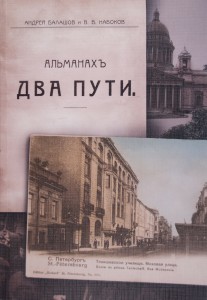





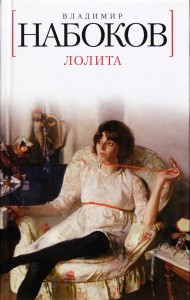
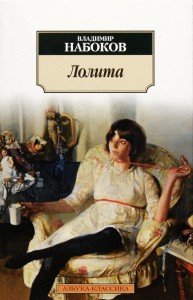

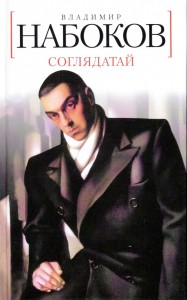
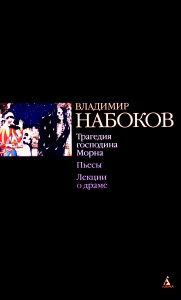
Recent Comments